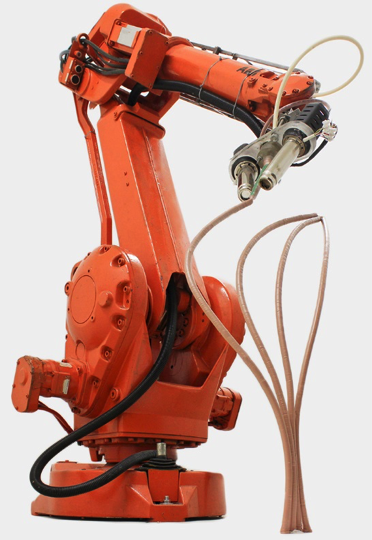While we’re all used to the notion that gravity likes to pull our 3D prints downward, new technology may be on the horizon which could change the game for printing time and material waste; helping us achieve a new level of sanity.
One day in the future, we may just have 3D printed objects that won’t require support material to keep complex geometry in place during the additive manufacturing process. Let’s take this to an imaginative and exciting conclusion: gravity-free 3D printing. Imagine an object, suspended in mid-air, completely stable in structure as it’s being built using a 3D printed process like FDM, SLA, SLS, or others.
The material used could one day float in empty space, suspended above the build platform while a particular additive manufacturing process fuses all of it together into a complex shape. The object synchronously rotates and shifts along all axes while a heated extruder, laser, or light adds additional material along each layer. The object, suspended via anti-gravity, uniformly sets into its complex shape with protruding features, overhanging geometries, and uniformed surfaces. The printer signals completion, allowing you to simply grab your newly minted physical object floating in mid-air and continue on with your day.
OK, so it doesn’t hurt to have some imagination does it? It’s the bedrock of invention, breaking barriers in minds in order to make the impossible a reality. While we’re nowhere near support-free 3D printing for the common man, two new technologies are on the horizon that are already putting us closer to the finish line.
The Mataerial method
Researchers Petr Novikov and Saša Jokić from the Institute for Advanced Architecture of Catalonia (IAAC), along with Joris Laarman Labs in the Netherlands, have already contributed to the cause. Known as “anti-gravity object modeling”, their process may one day break the mold to how we approach 3D printing inclines, smoothness, or sharp angles that otherwise would collapse before our eyes.
https://vimeo.com/channels/staffpicks/55657102
The goal: manufacture structures of almost any size or shape, independent of traditional build spaces and supports. At first glance, this robotic arm looks like it’s ready to build a Toyota as opposed to 3D print. However, upon closer inspection, it creates flowing 3D curves on non-horizontal surfaces that remain suspended in mid-air. By neutralizing the effects of gravity, the team may have accomplished 3D printing that’s essentially independent of physical limits. While objects are not truly suspended in the air, it’s pretty darn close.
This design is able to extrude thermoset polymers into different outward angles while instantaneously solidifying into a stable structure. It can build onto vertical surfaces, feature multi-direction printing during a construction process, and create intricate curves that flow across space without support material underneath.
Anchorless selective laser melting
Across the pond, supports are referred to as “anchors”. Professor Neil Hopkinson and his team at Sheffield University’s Centre for Advanced Additive Manufacturing (ADAM) have developed a new approach to laser melting fine metal powder into 3D objects. Known as ASLM (Anchorless Selective Laser Melting), this process currently uses low melt temperature metals to fuse fine metal powder into 3D objects. The concept is based off eutectic alloys; metals that solidify during a single and sharp temperature point. If they can achieve ultra-fast hardening processes, stress points in complex geometries can be alleviated without the need for using additional support material. The team is currently exploring materials with higher melting temperatures as well, with the goal of one day making parts with aluminum powder using the same process.
The Picsima process
In the world of silicon 3D printing, the Picsima 3D printer intends to revolutionize silicone 3D printing. Using commercially available silicon products, the unit is designed to print medical and food grade objects using linked polymers including silicone, epoxy resin, and acrylic. Their patent pending 3D printing process controls the polymerization of the silicone, thus maintaining a stable object structure. With traditional extrusion of silicone, object designs are limited due to the geometry of parts that can be created. The product has not been released yet, but more information can be found in the video below.
http://www.youtube.com/watch?v=hkgeVi2zCRI
Gel dispensed printing (GDP)
Israeli company MASSIVit 3D has recently created a 3D printing technology specifically suited for large objects that typically require supports to help stabilize complex overhangs or angles. Known as Gel Dispensed Printing (GDP), the printer uses a moving gantry system to cure UV sensitive material with light. Once UV light hits a specific area, the gel cures and solidifies into a hard polymer. Using a combination of proprietary software, special printing gel, and UV curing processes, the MASSIVIT 3D printer can create non-vertical walls and ceiling without the need for supports.
Potential benefits of support-free 3D printing
The first to reach pure, unadulterated, support-less 3D printing will have created a technology that will trickle down across multiple industries. The benefits are potentially enormous, helping to improve near-net-shape manufacturing to the point achieving enormous savings in energy, material, cost, and time. Let’s not even get into the time and effort today’s prints require to remove excess support material during post-processing.
What would Spock do?
We all know that Spock would simply design his model so that it LOGICALLY wouldn’t need supports during printing. However, even good Vulcans know that you’re still constrained to certain geometries, angles, and overhangs that will certainly drop, droop, or bend after extrusion without supports (material characteristics aside). Support free 3D printing should be categorized as one of the final frontiers for additive manufacturing.









